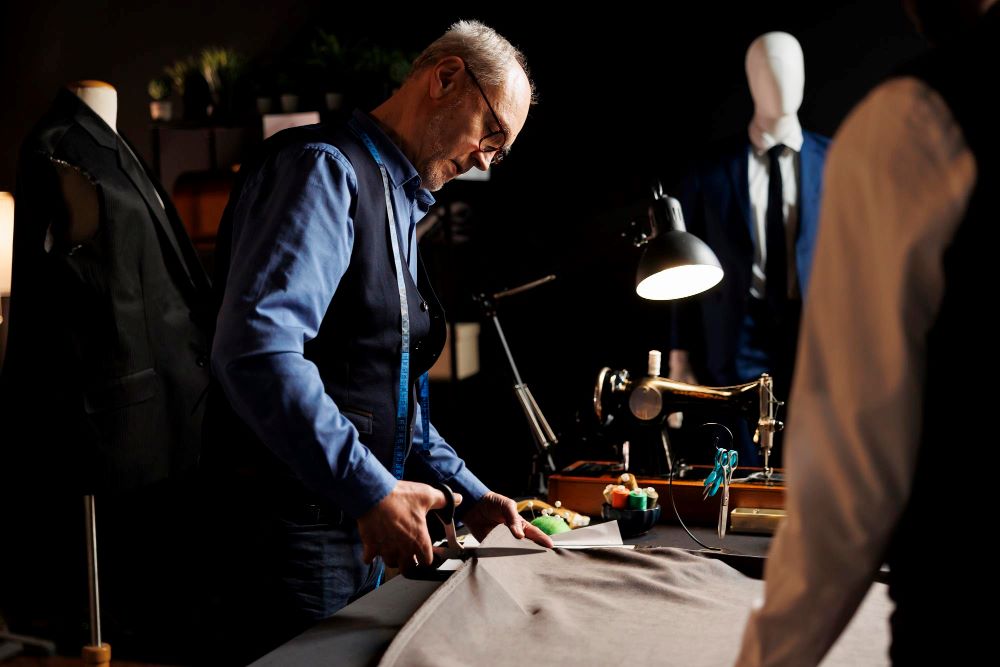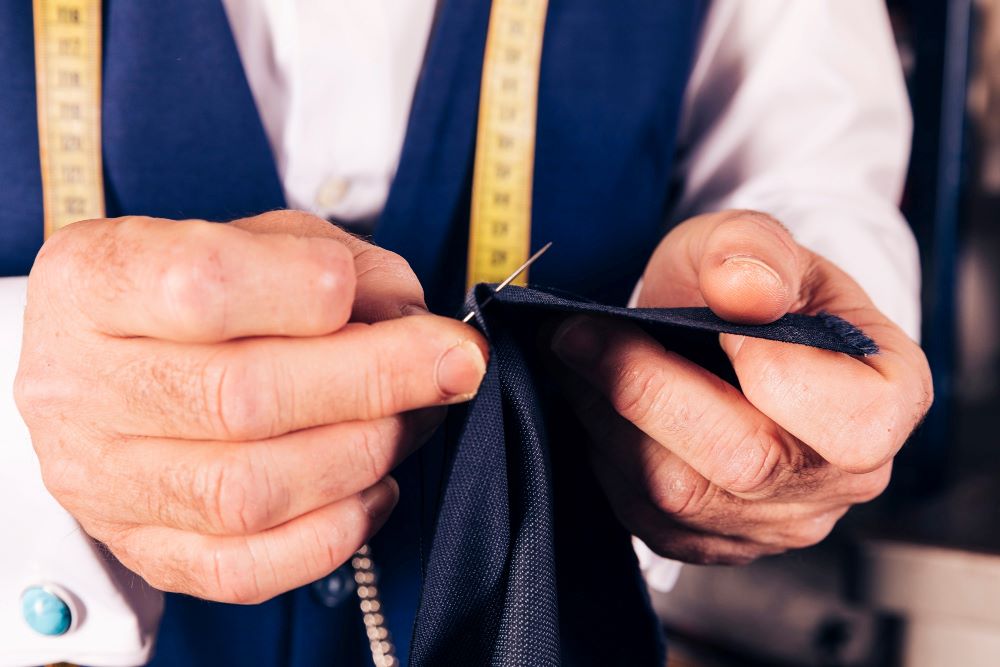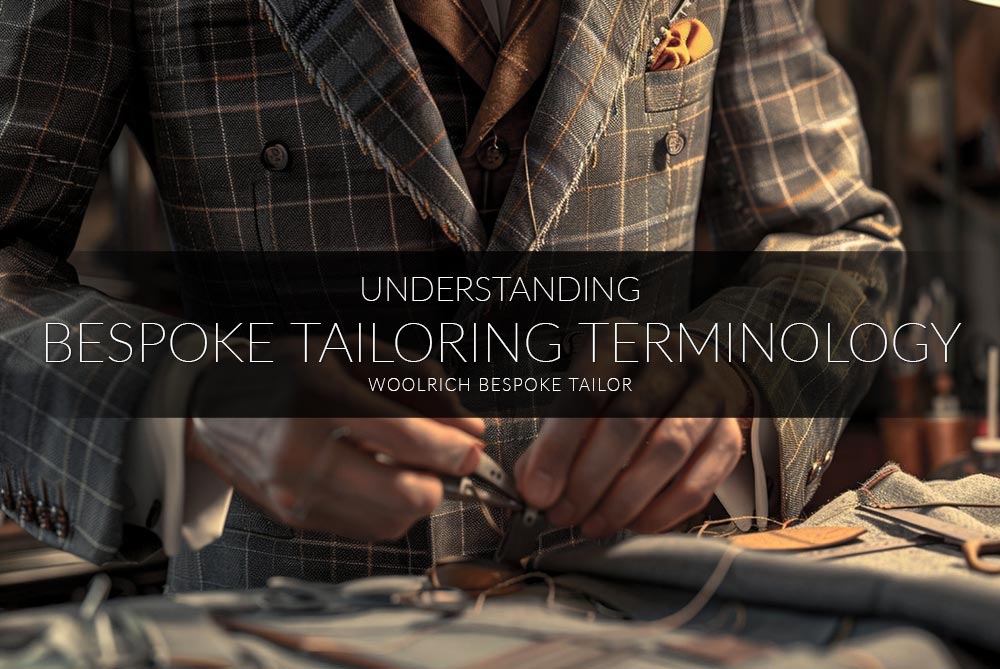Bespoke tailoring is a specialized craft that involves creating custom-made garments to fit an individual’s unique measurements and preferences. Understanding the terminology associated with bespoke tailoring is essential for both clients and professionals in the industry. In this article, we will delve into the key terms and concepts that define the world of bespoke tailoring.
What is a Tailor and Their Role in Bespoke Tailoring?

A tailor is a skilled professional who is trained in the art of creating custom garments, such as suits, jackets, and shirts, from scratch based on individual measurements and specifications. The responsibilities of a tailor go beyond just sewing pieces of fabric together; they are entrusted with translating a client’s style preferences into a tangible garment that fits them perfectly.
When it comes to bespoke tailoring, a tailor plays a pivotal role in the entire process. From taking precise measurements to making necessary alterations, a tailor ensures that the final product is a true reflection of the client’s sartorial vision. The bespoke tailoring experience is highly personalized, with the tailor guiding the client through fabric selection, style choices, and fitting sessions to create a one-of-a-kind garment.
To excel in bespoke tailoring, a professional tailor must possess a diverse skill set. Key skills include proficiency in garment construction, understanding of various fabrics and their properties, attention to detail in executing intricate stitching techniques, and the ability to communicate effectively with clients to bring their vision to life.
Exploring Different Types of Jackets in Bespoke Tailoring
A bespoke jacket is a hallmark of fine tailoring, characterized by its impeccable fit, quality construction, and attention to detail. Features of a bespoke jacket include hand-picked fabrics, customized linings, and precise stitching that ensure a superior finish. Tailors often meticulously hand-cut each piece of fabric to create a bespoke jacket that is tailored to perfection.
Various types of fabrics are used in tailoring jackets, ranging from classic wool and tweed to luxurious silk and cashmere blends. The choice of fabric not only impacts the look and feel of the jacket but also influences its durability and performance. Clients can select from a myriad of fabrics to achieve the desired aesthetic and functionality in their bespoke jacket.
Common jacket alterations and customizations in bespoke tailoring include adjustments to the sleeve length, waist suppression, and collar shape to create a garment that complements the client’s physique and style preferences. Tailors pay close attention to these details to ensure that the jacket fits like a second skin and enhances the overall silhouette.
Understanding Cuff Styles in Bespoke Tailoring
Cuffs play a crucial role in defining the overall look of a shirt or jacket in bespoke tailoring. Different cuff styles, such as barrel cuffs, French cuffs, and turnback cuffs, offer unique design elements that cater to varying tastes and occasions. The choice of cuff style can significantly impact the aesthetic appeal and formality of the garment.
When selecting a cuff style for your garment, it is essential to consider factors such as the type of fabric, the intended purpose of the garment, and your personal style preferences. Tailors provide expert guidance on choosing the perfect cuff style that complements the overall design and ensures a harmonious look.
Tips for choosing the perfect cuff style include assessing your wardrobe needs, experimenting with different styles to find what suits you best, and seeking the advice of a professional tailor who can recommend options based on your individual style and occasions.
The Art of Bespeaking: What Does it Mean in Tailoring?

The term “bespoke” in tailoring refers to the creation of custom garments that are tailored to an individual’s specific measurements and requirements. Distinct from off-the-rack and made-to-measure clothing, bespoke tailoring offers unparalleled customization and attention to detail, resulting in a truly unique and personalized garment.
Opting for bespoke tailoring comes with a myriad of benefits, including a custom fit that enhances comfort and confidence, the opportunity to select from a wide range of fabrics and styles, and the assurance of craftsmanship that reflects the highest standards in tailoring. Clients who choose bespoke garments are part of a time-honored tradition that celebrates individuality and sartorial elegance.
The process of bespeaking a tailored garment involves detailed consultations with the tailor, selection of fabrics and design elements, multiple fittings to ensure an impeccable fit, and meticulous handcrafted workmanship that brings the garment to life. Each step in the bespoke tailoring process is designed to create a garment that is a true expression of the wearer’s personality and style.
Mastering Tailoring Terminology: From Stitches to Vents

Common stitch types used in bespoke tailoring include running stitch, backstitch, and pick stitching, each serving a specific purpose in garment construction. Precision in stitching is paramount in creating durable seams and intricate detailing that define the quality of a bespoke garment.
Vents in jacket construction refer to openings at the back or sides of the garment that allow for ease of movement and enhance the overall fit. Styles such as center vents, double vents, and side slits offer different aesthetics and functional benefits, catering to various body types and sartorial preferences.
Significance of pick stitching and hand-cut pieces in tailoring lies in the attention to detail and craftsmanship that elevate a garment from ordinary to extraordinary. Pick stitching, a subtle and refined type of stitching along the edges of the garment, adds a touch of sophistication, while hand-cut pieces ensure precision and a bespoke finish.
Talk to your Tailor

Always ensure to inquire with your tailor. It is best to prevent any misunderstandings or surprises. When visiting a custom tailor shop, do not hesitate to seek clarification or advice. Your physique and personal style may not align with your expectations. Tailors are there to assist you and possess the expertise and experience to do so. A skilled bespoke tailor has honed their skills over many years. They are capable of crafting a pattern and designing a garment that meets your specific requirements. Look beyond the surface and try to comprehend the methods they use, so you can form your own opinions.




